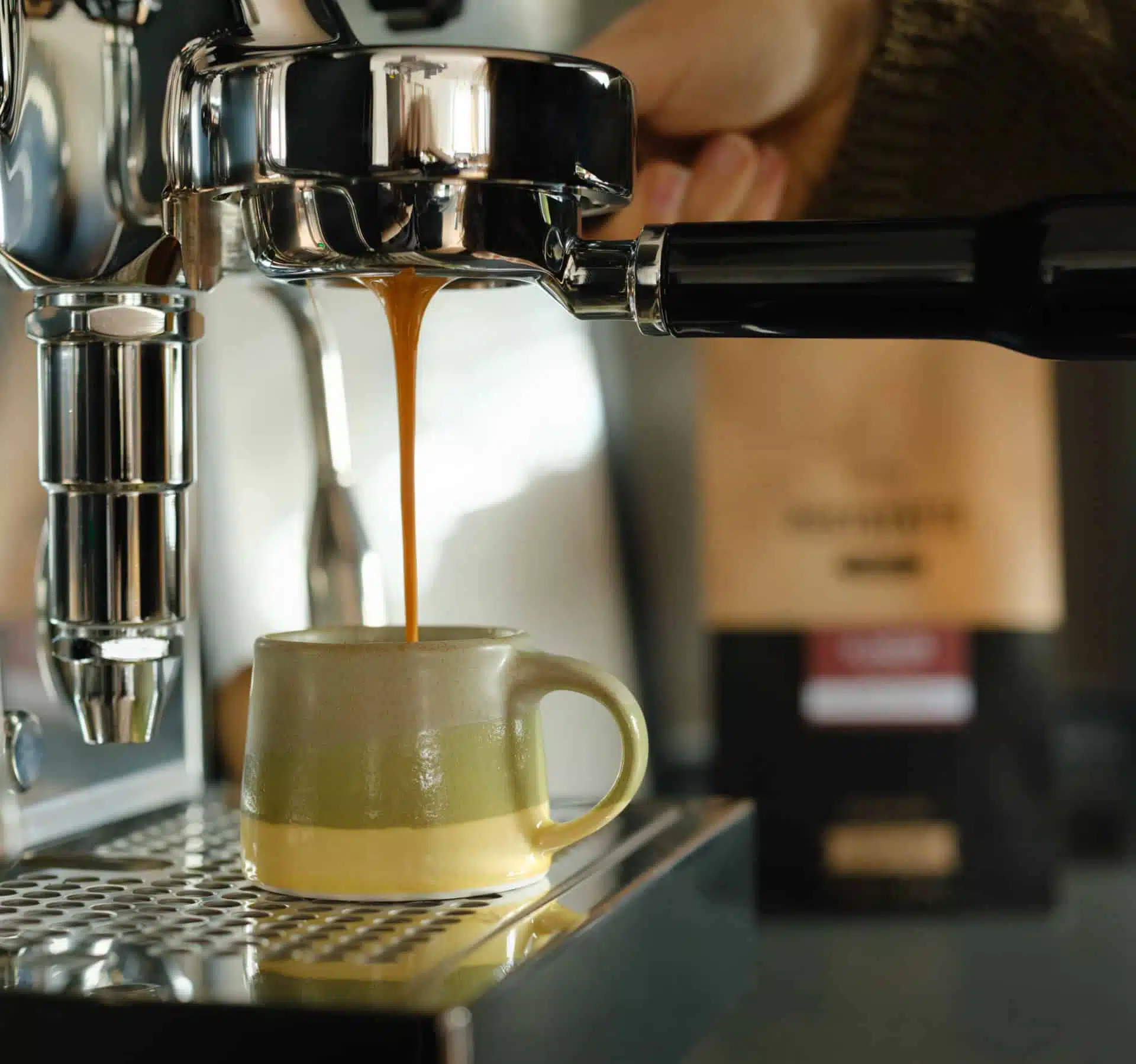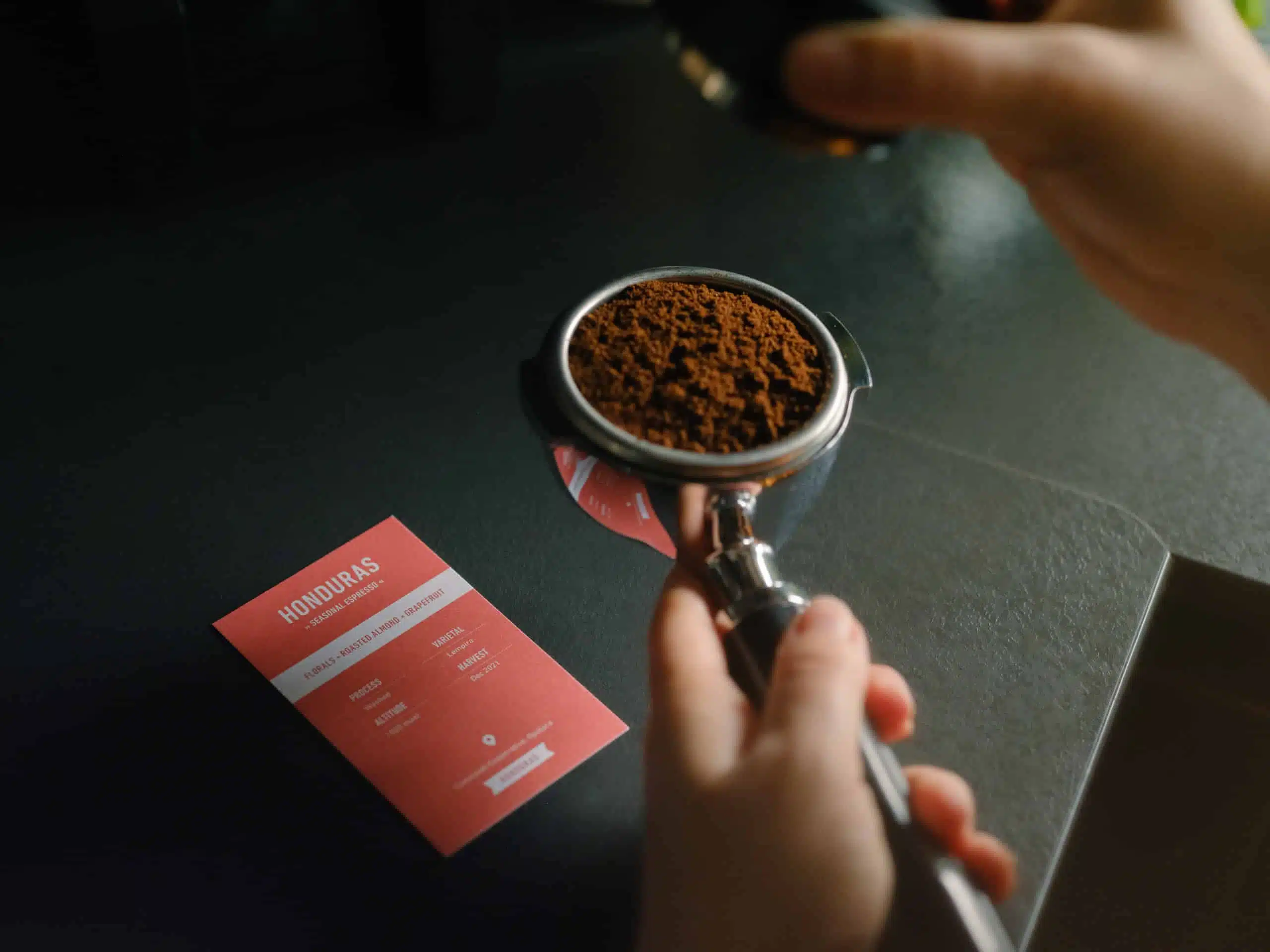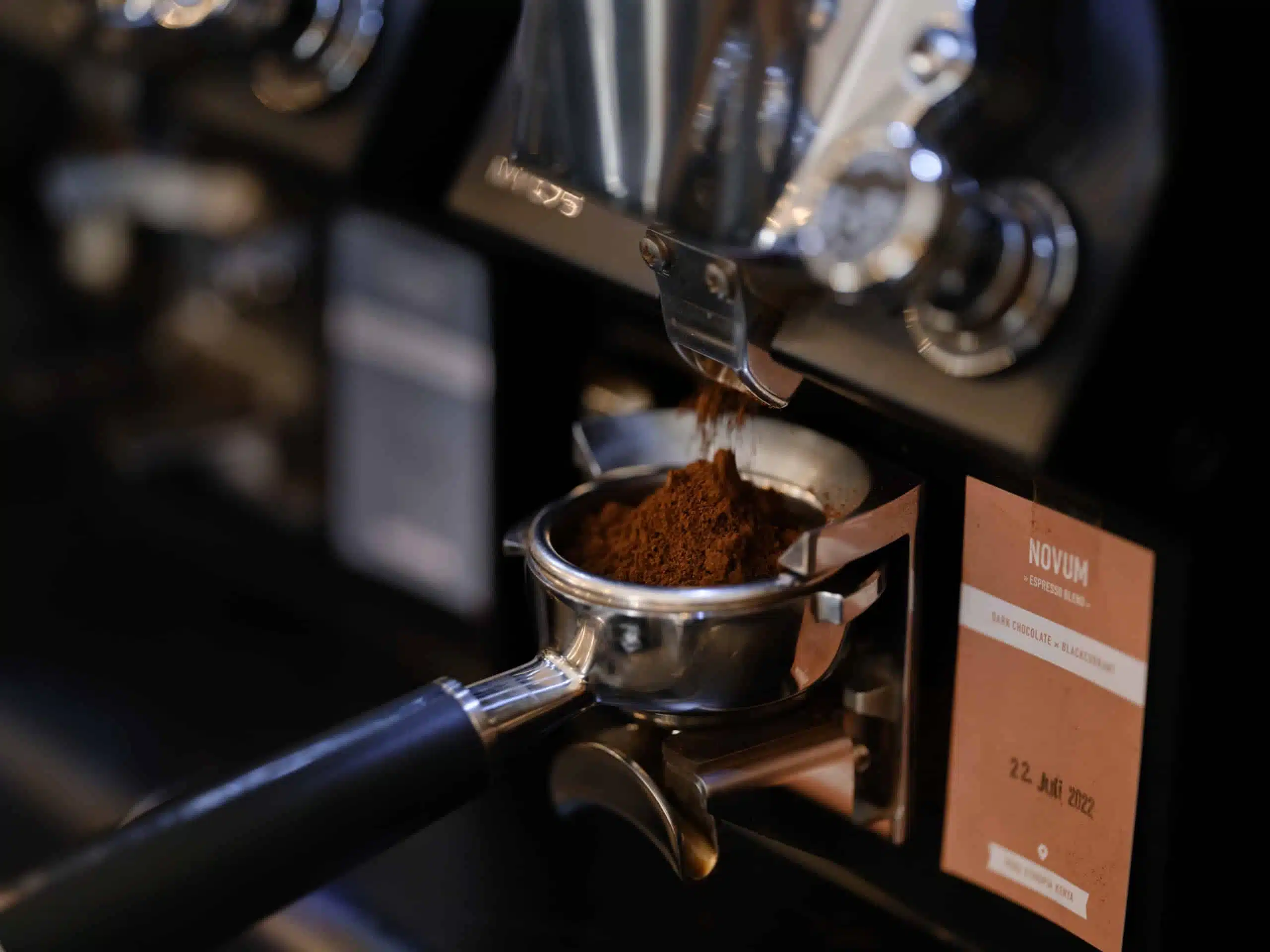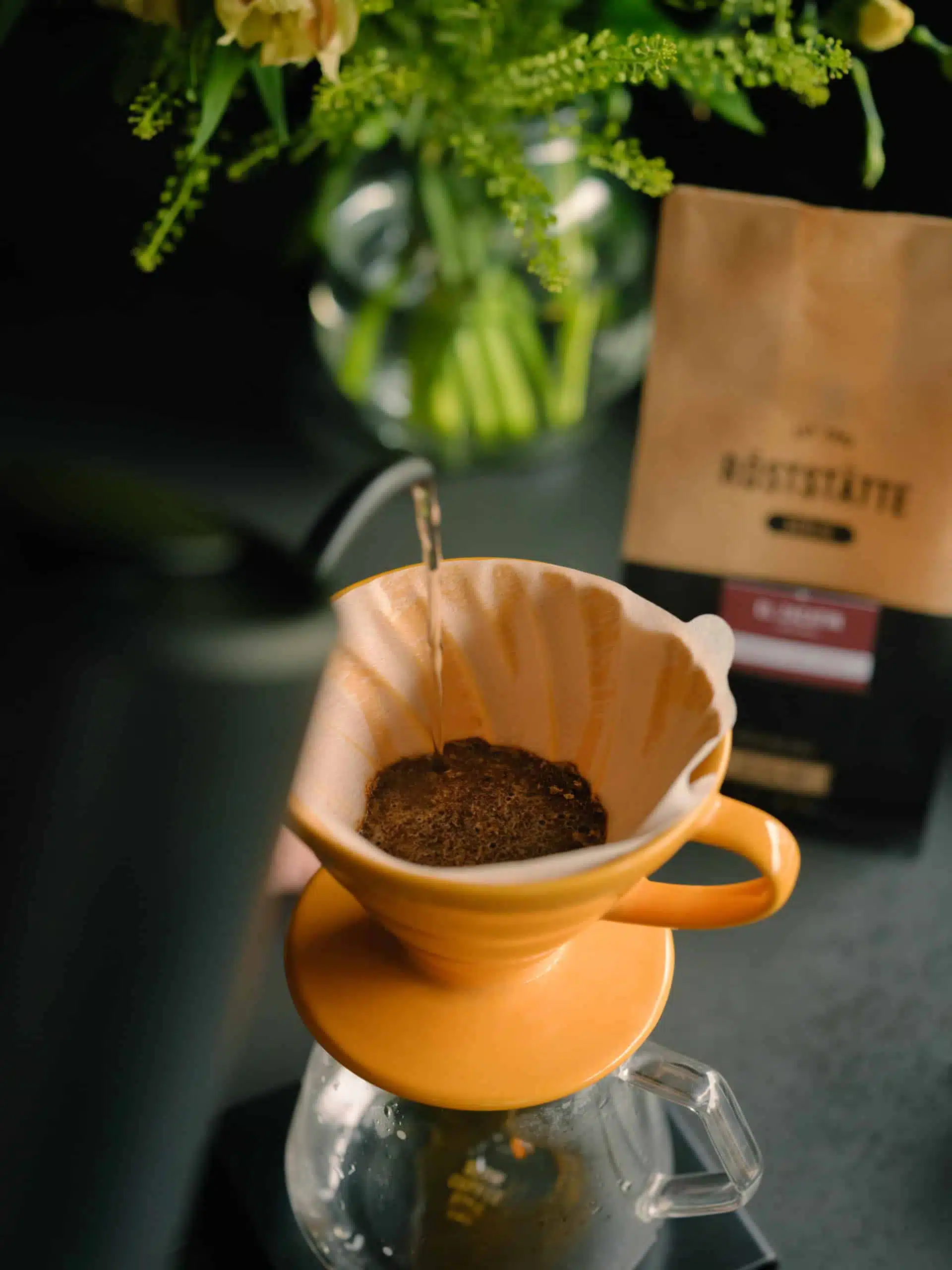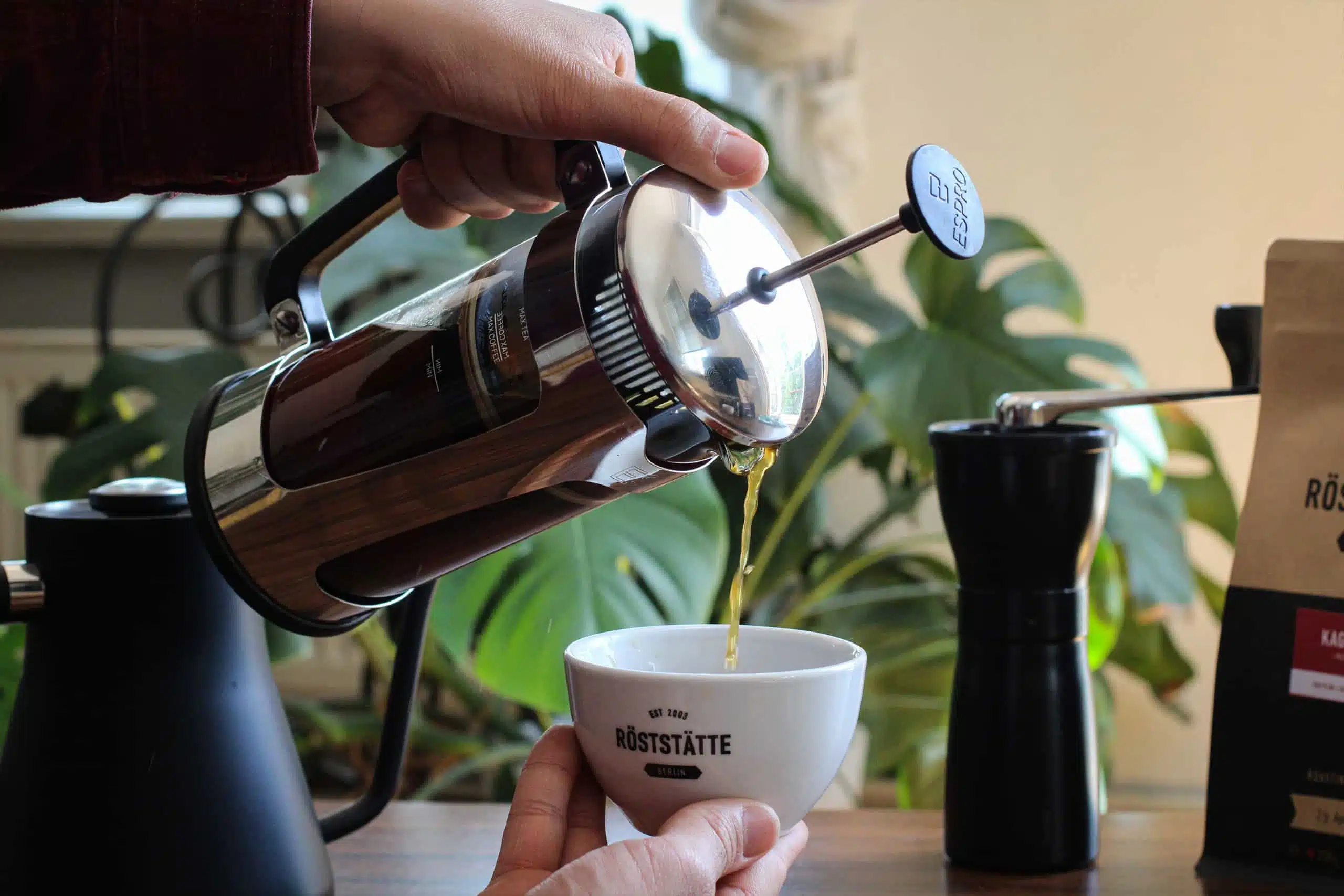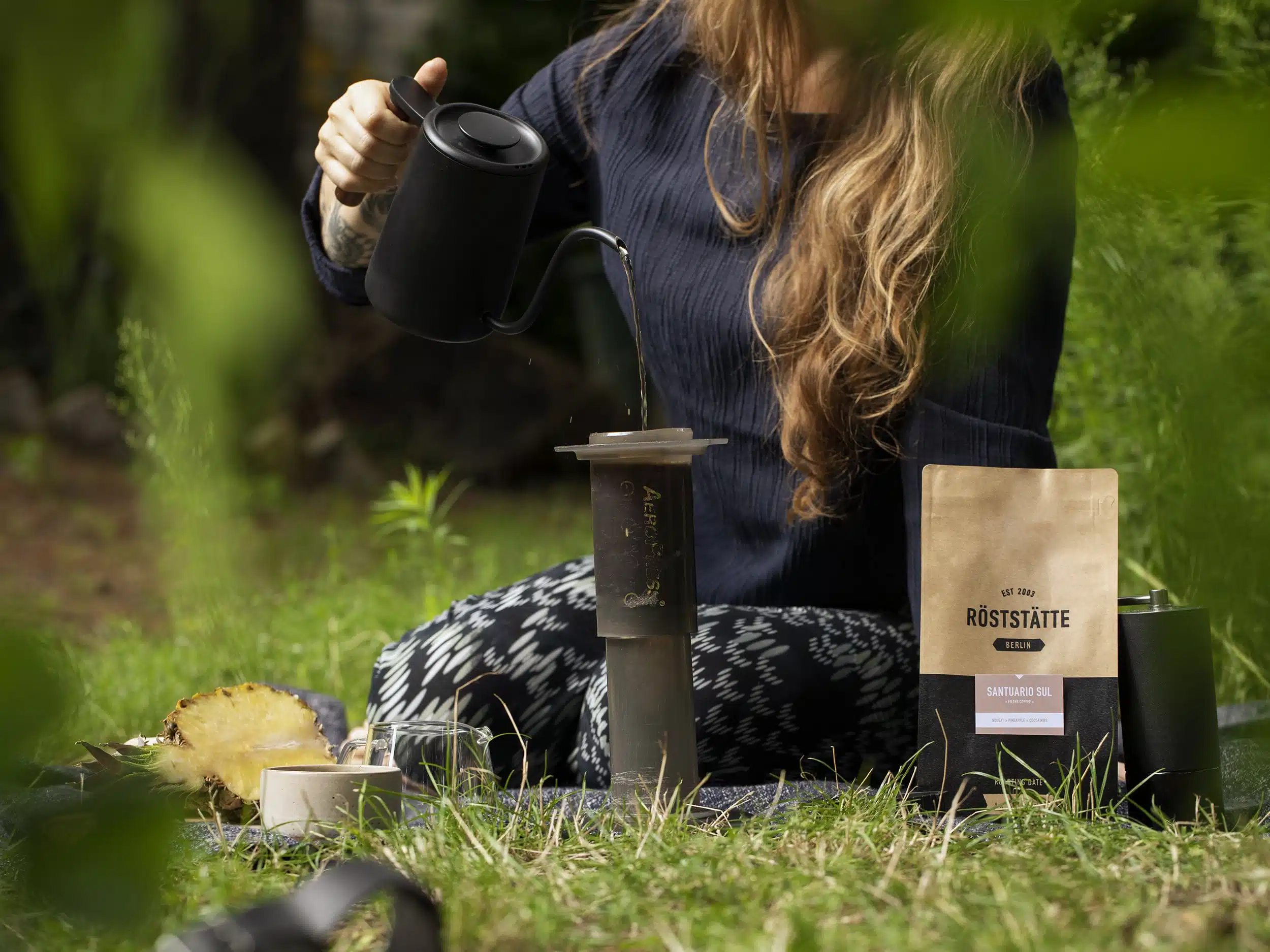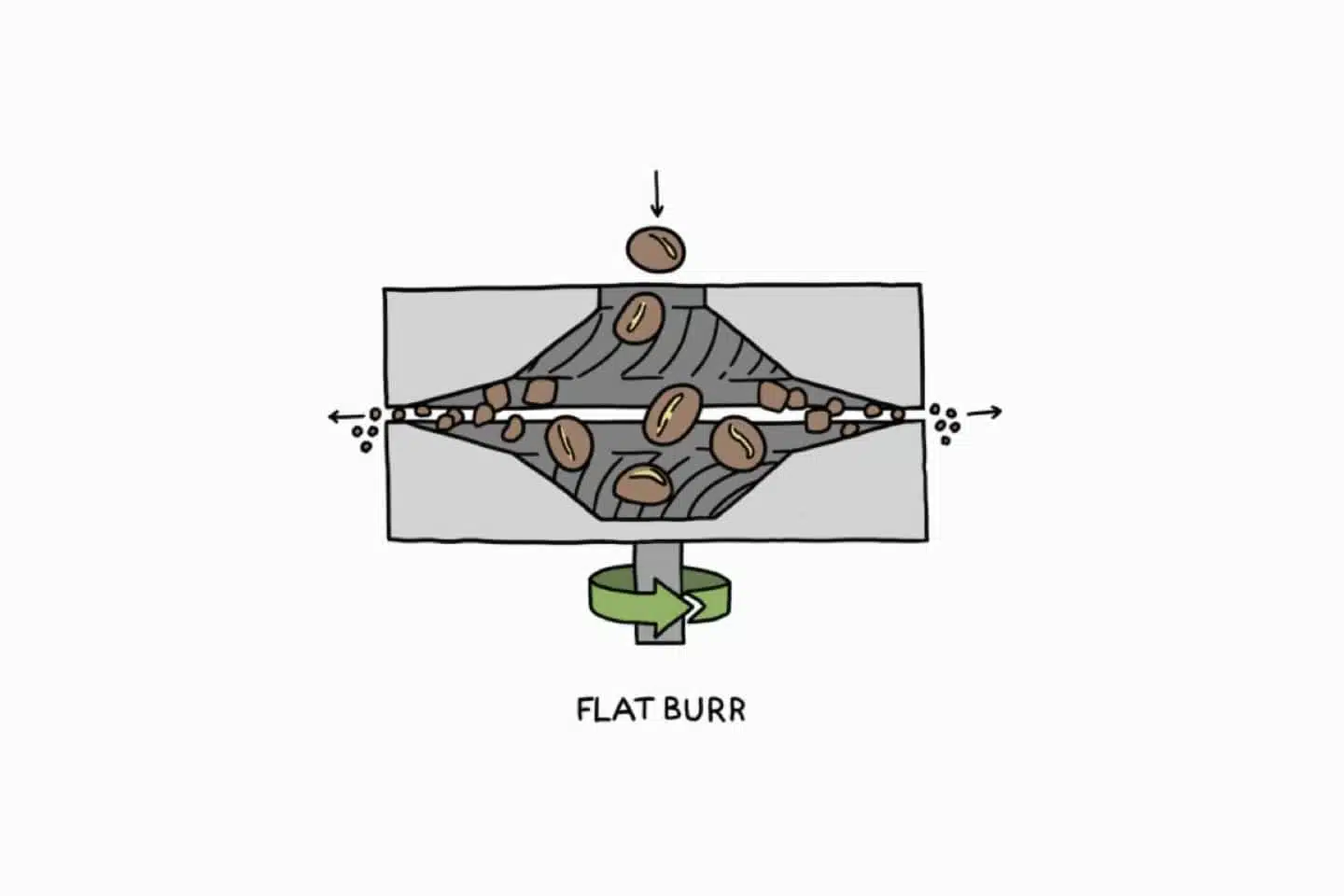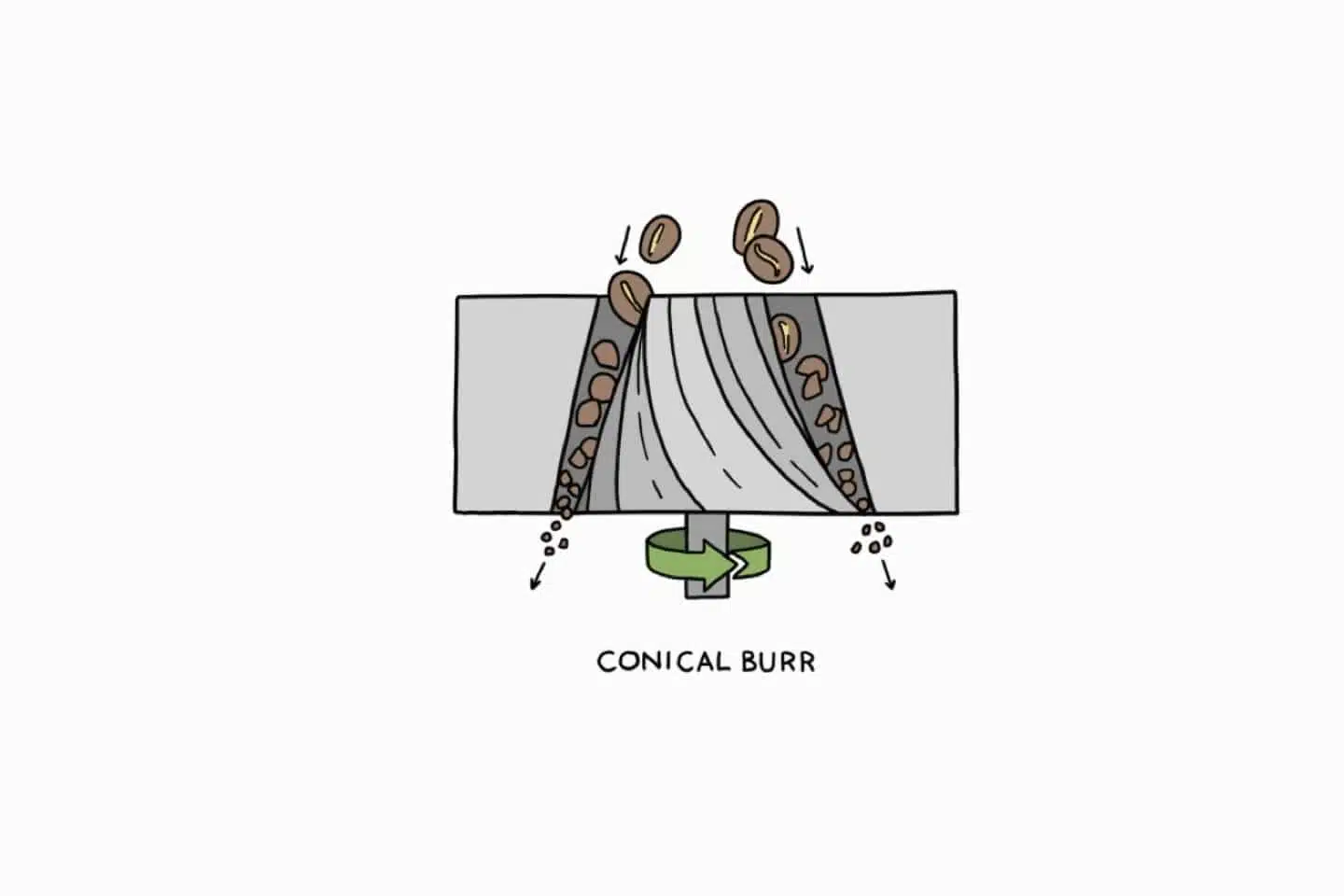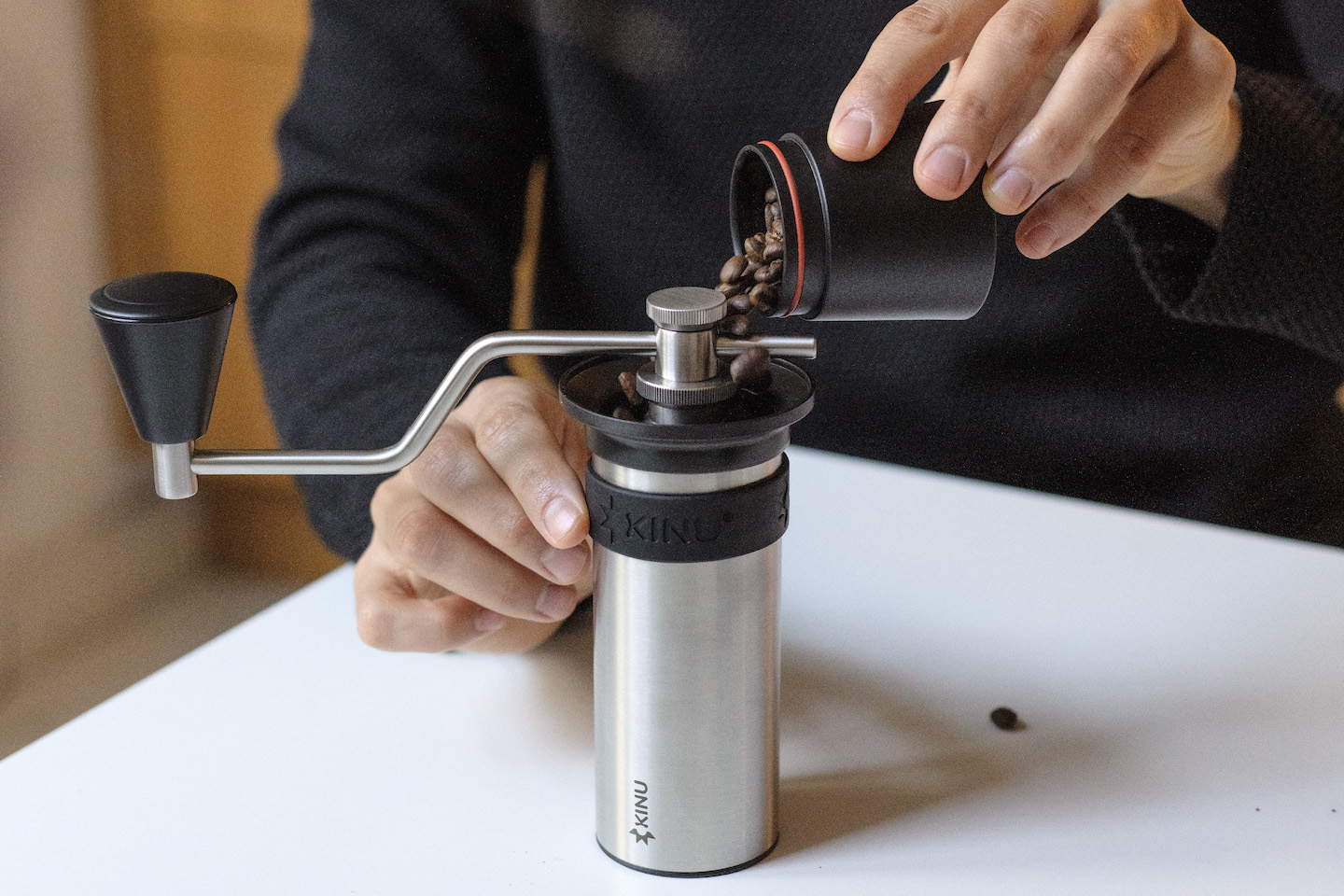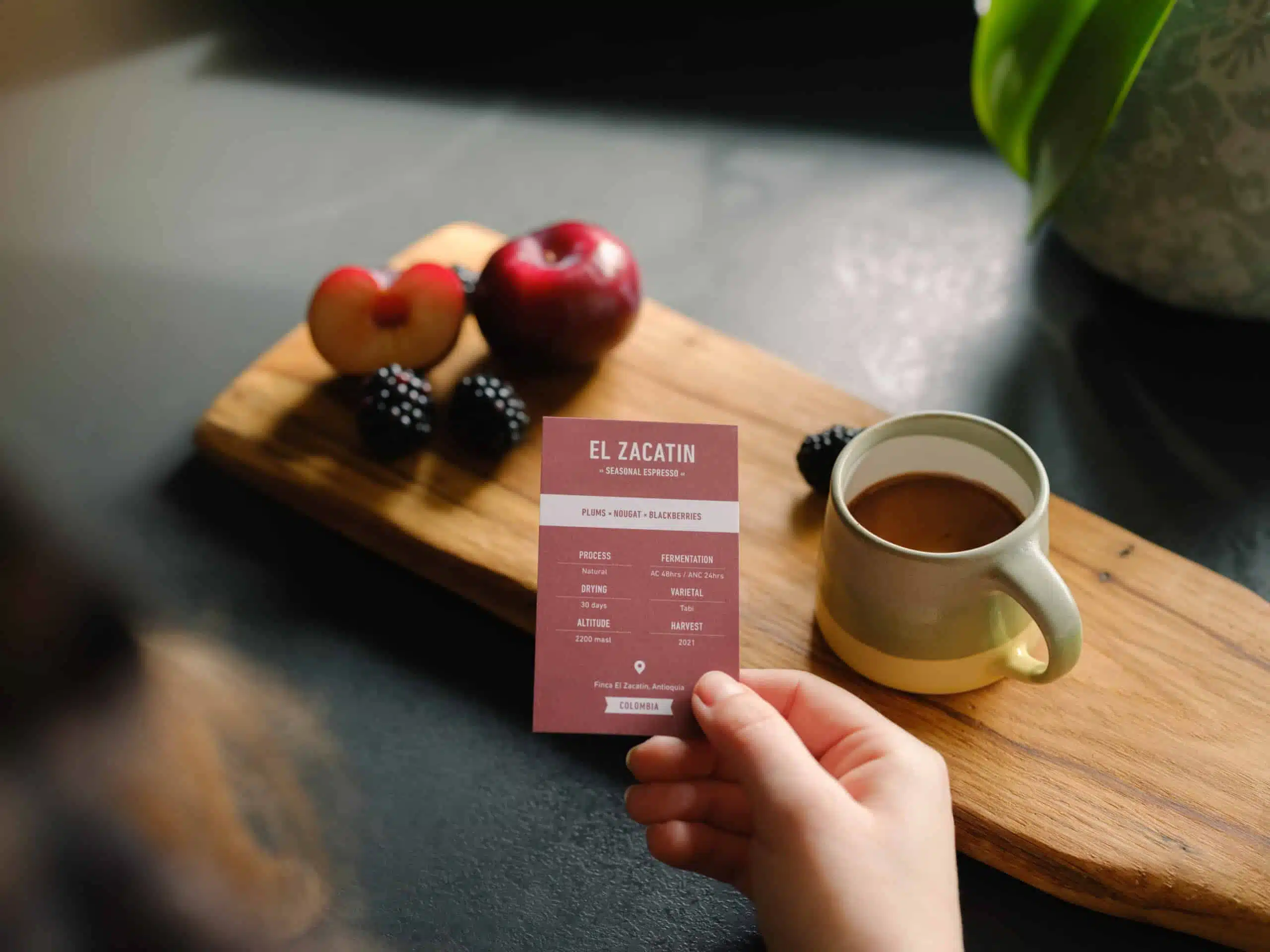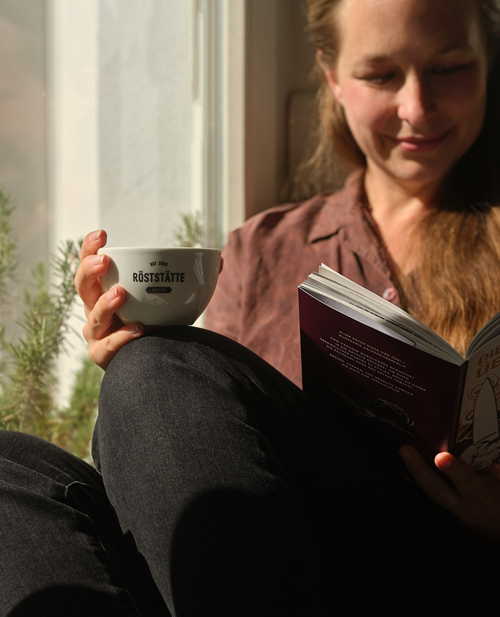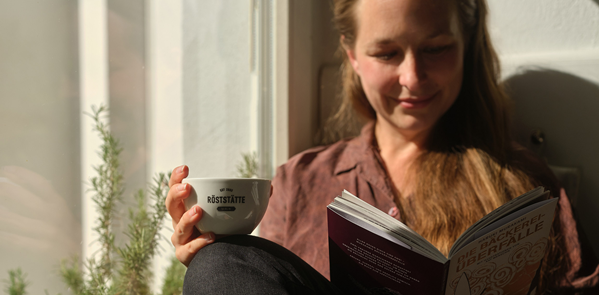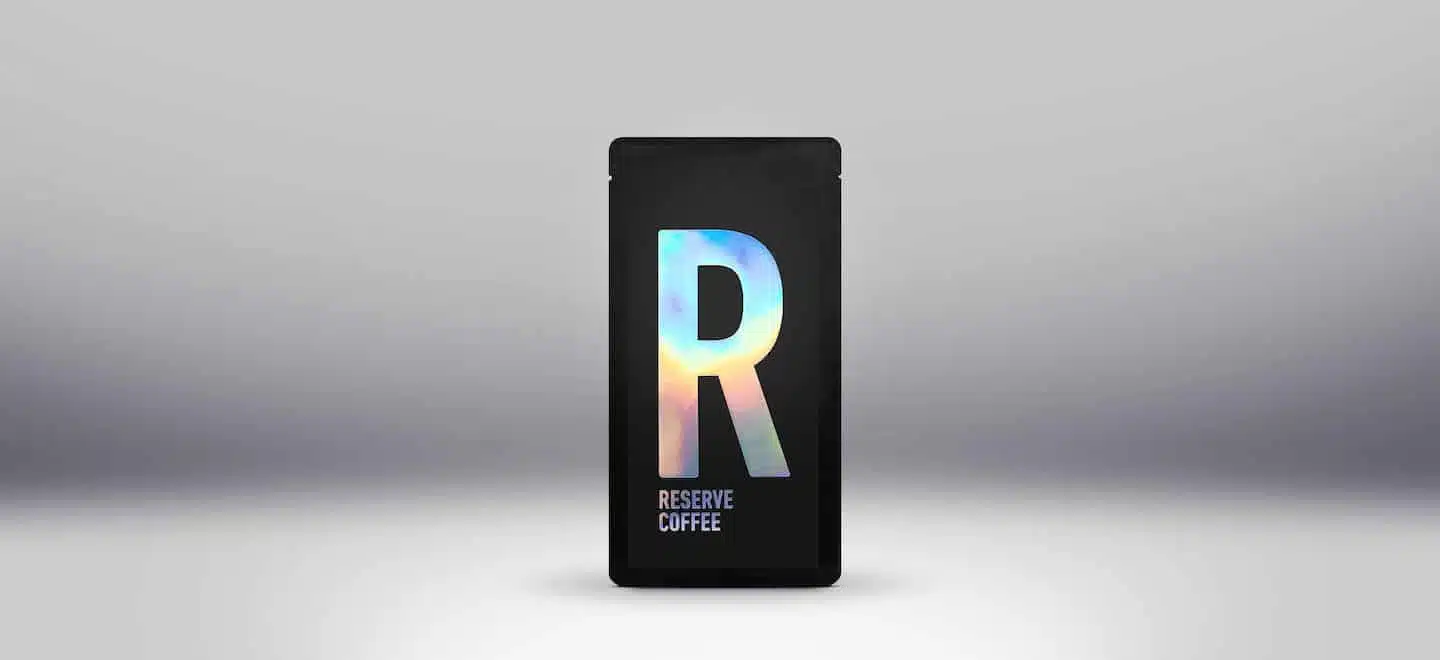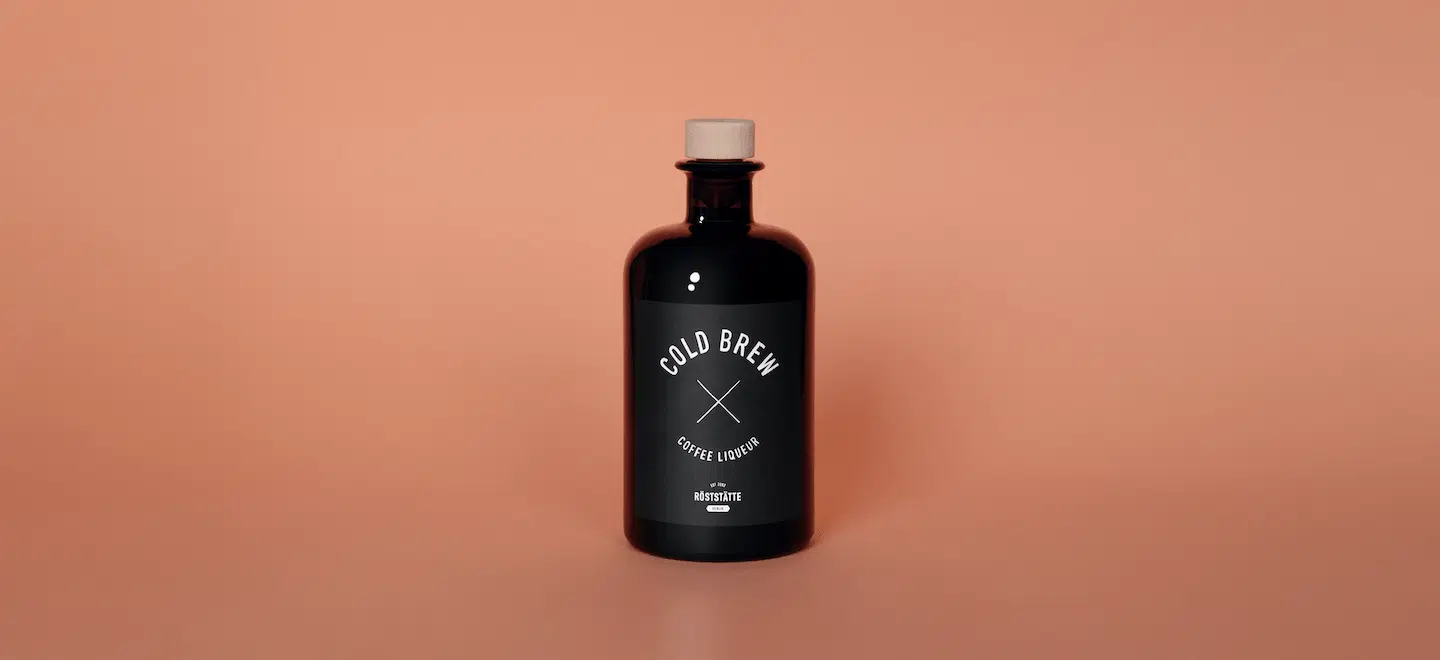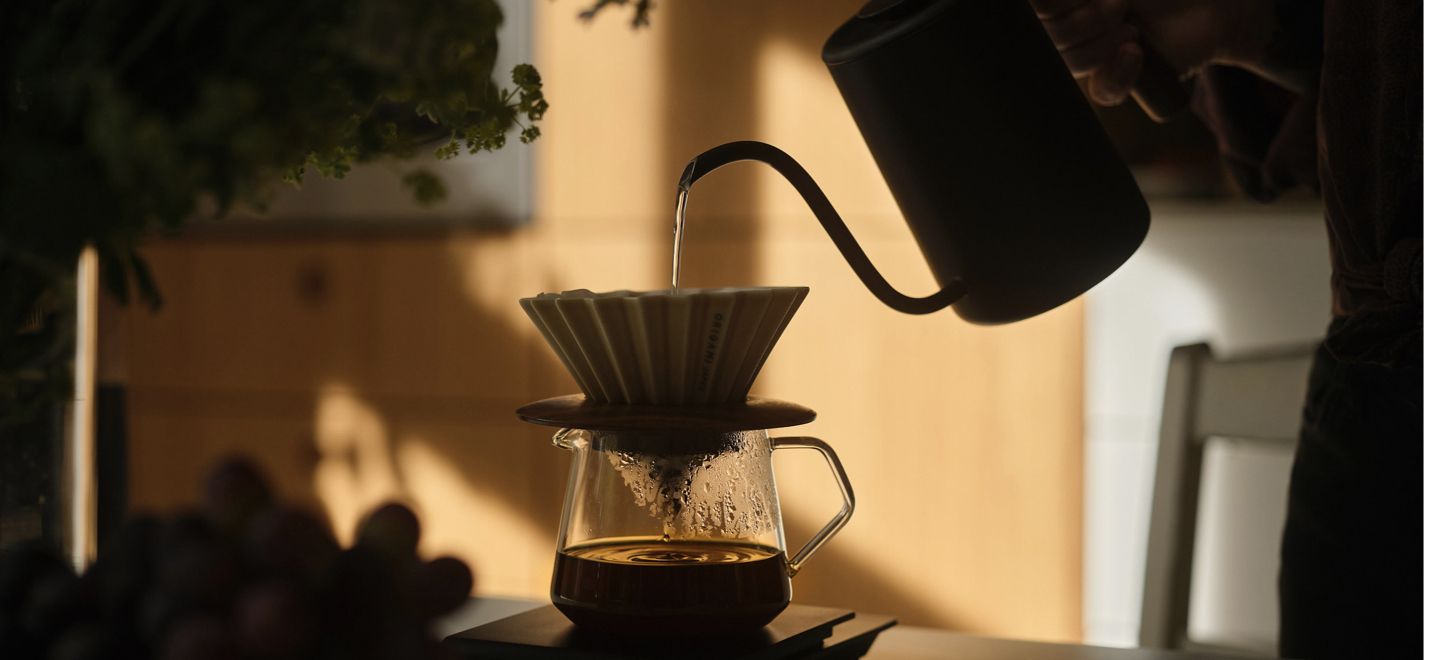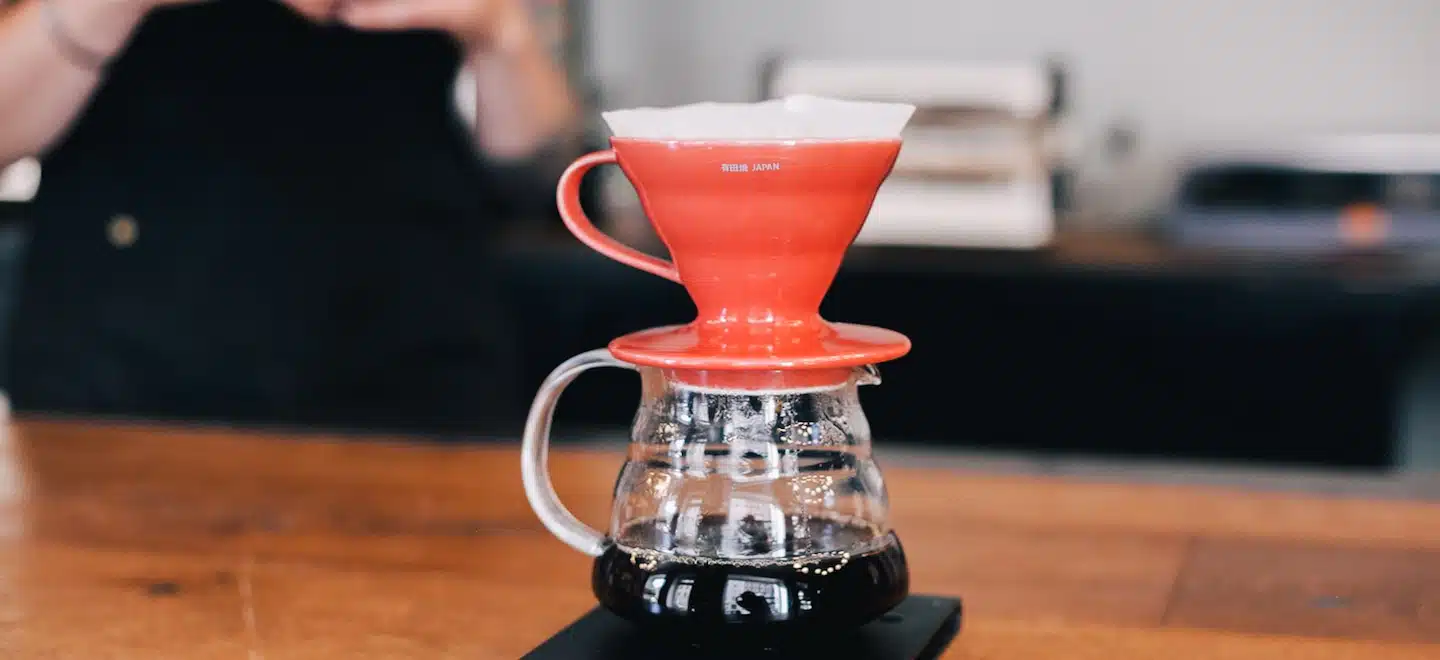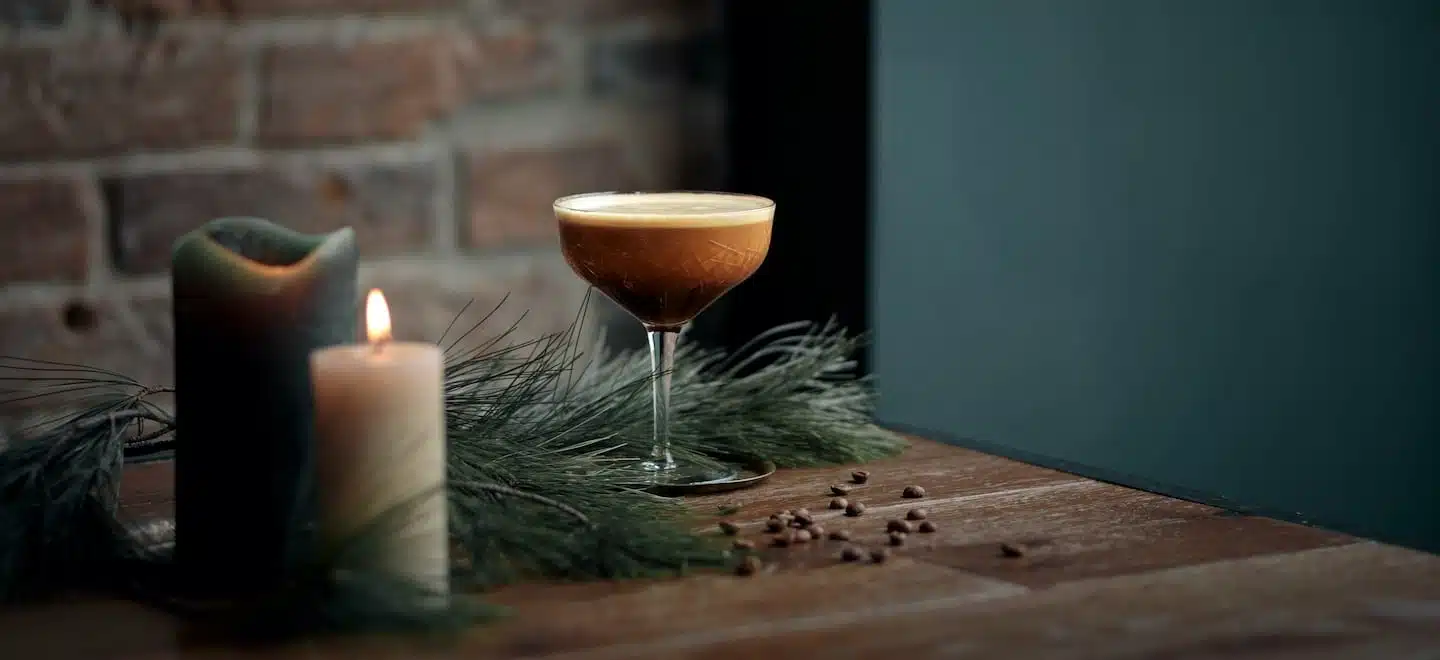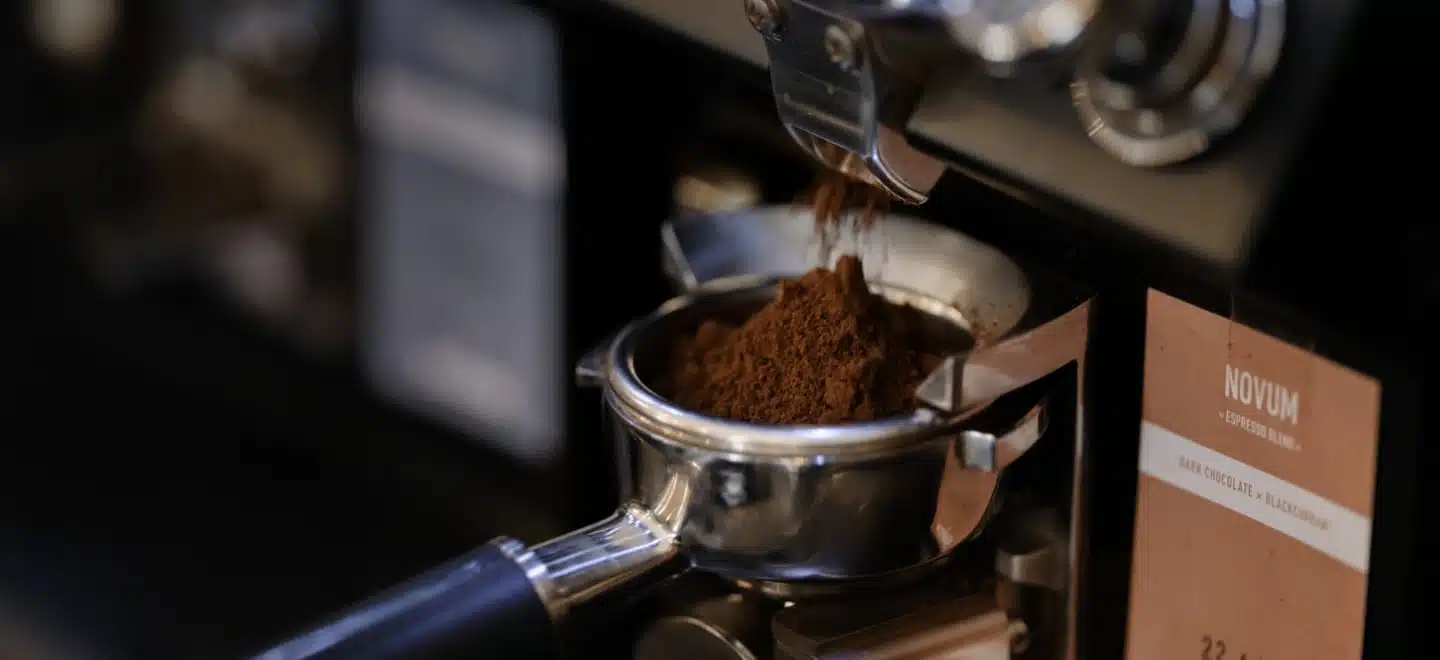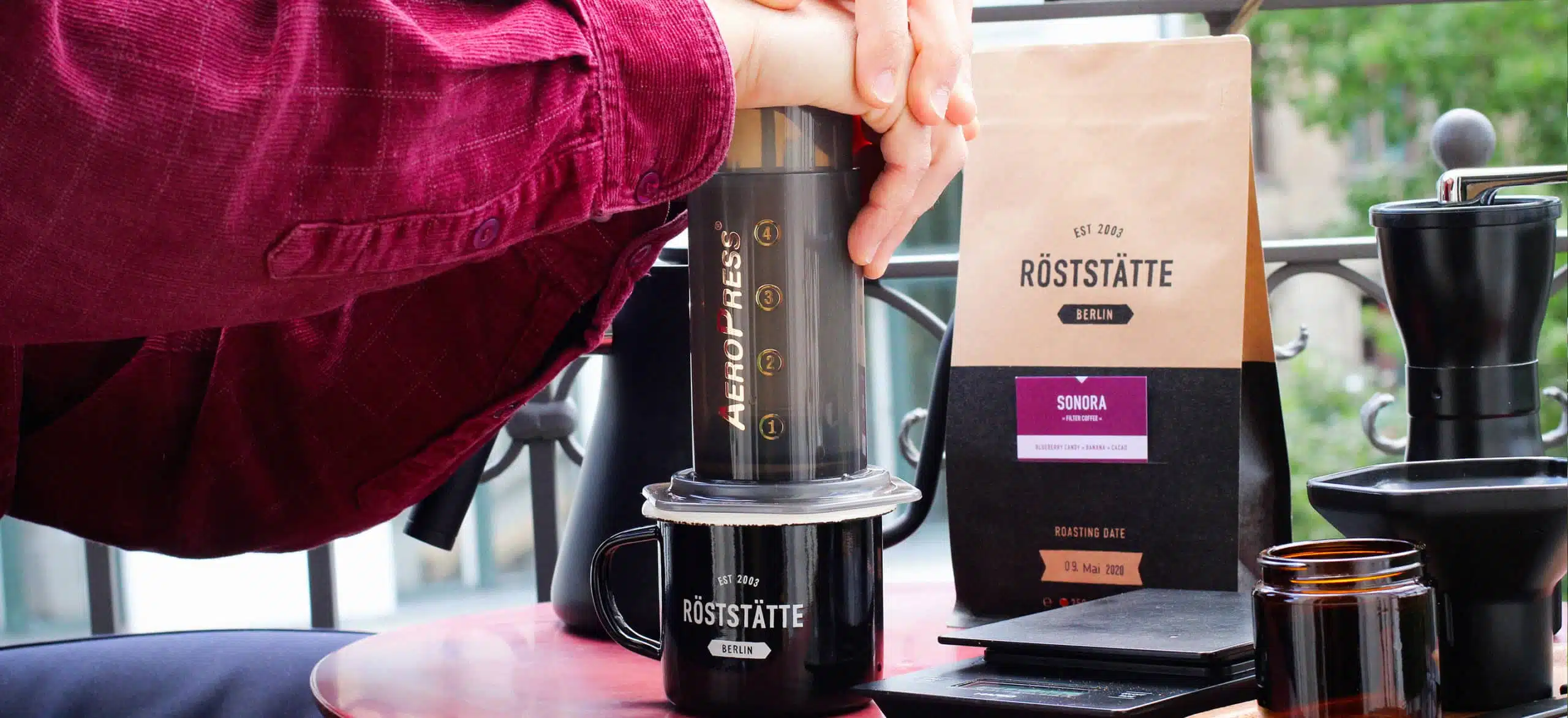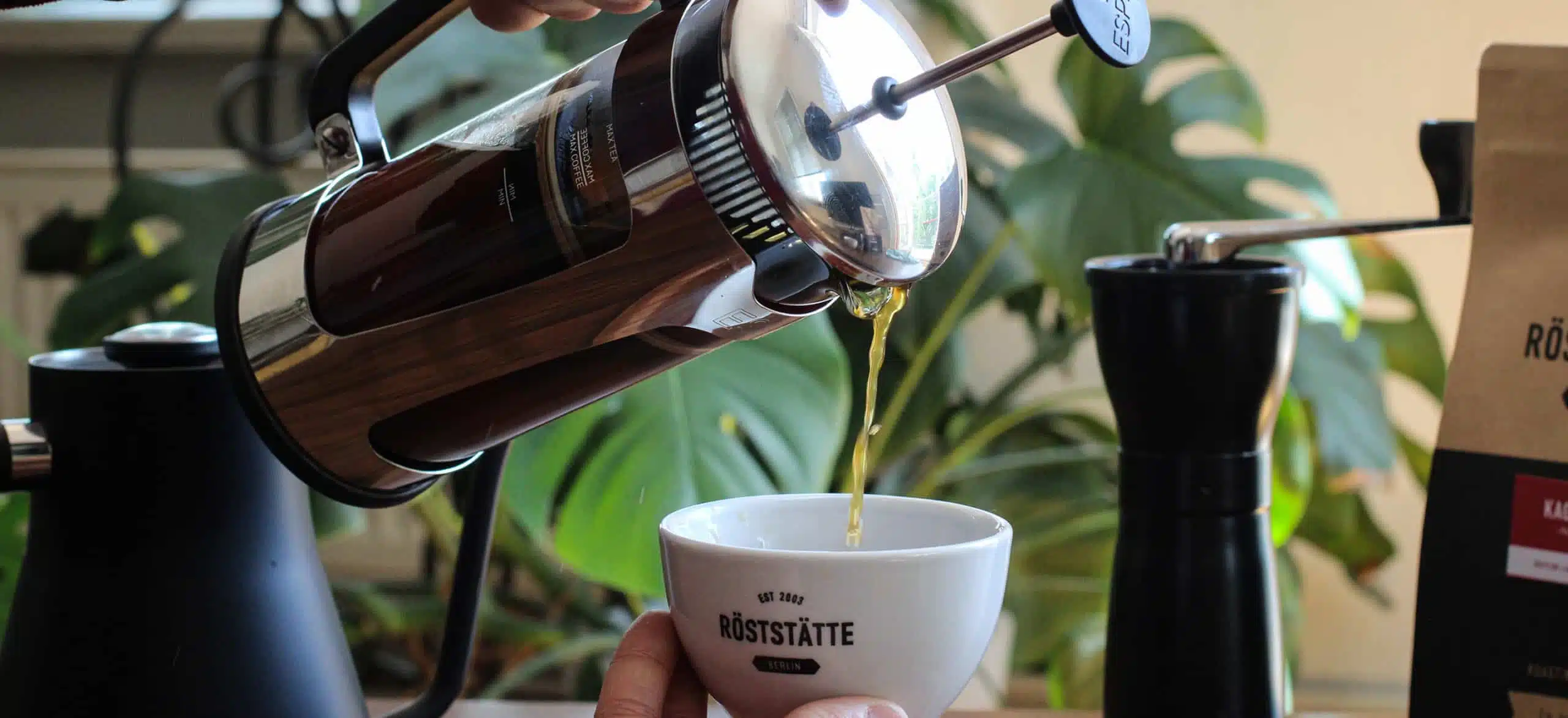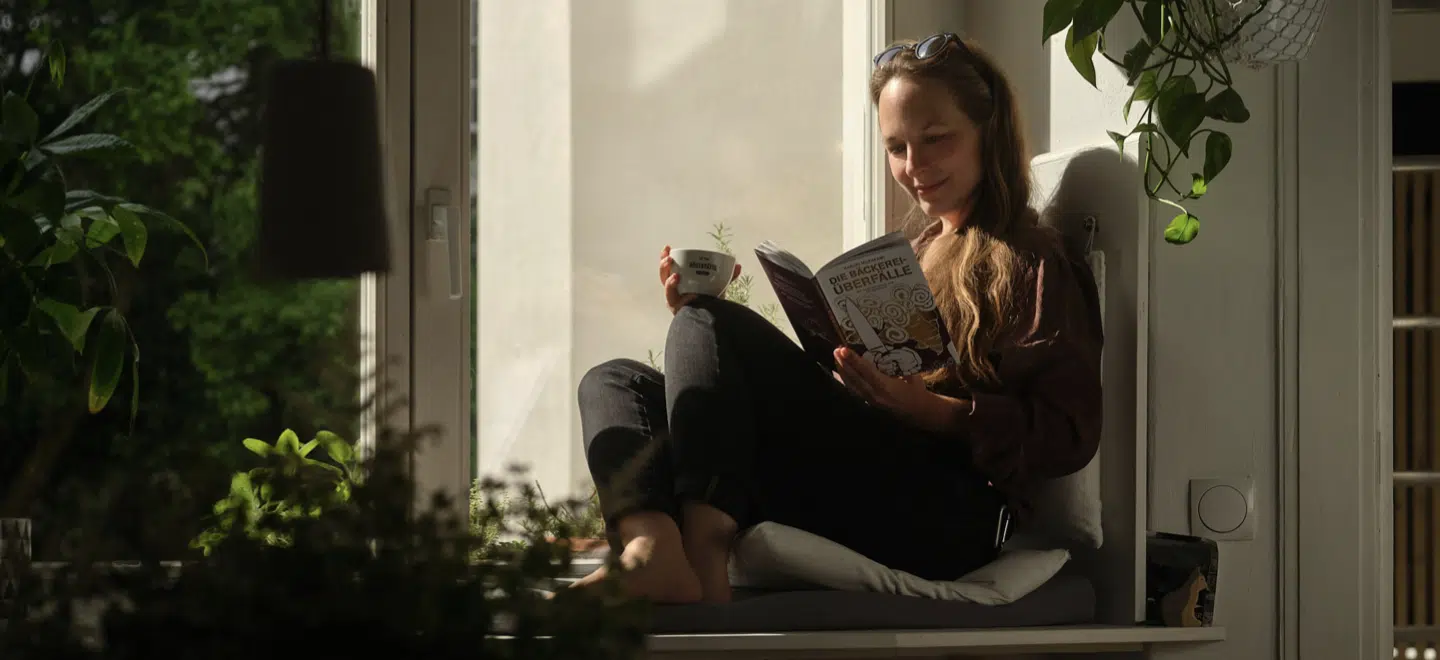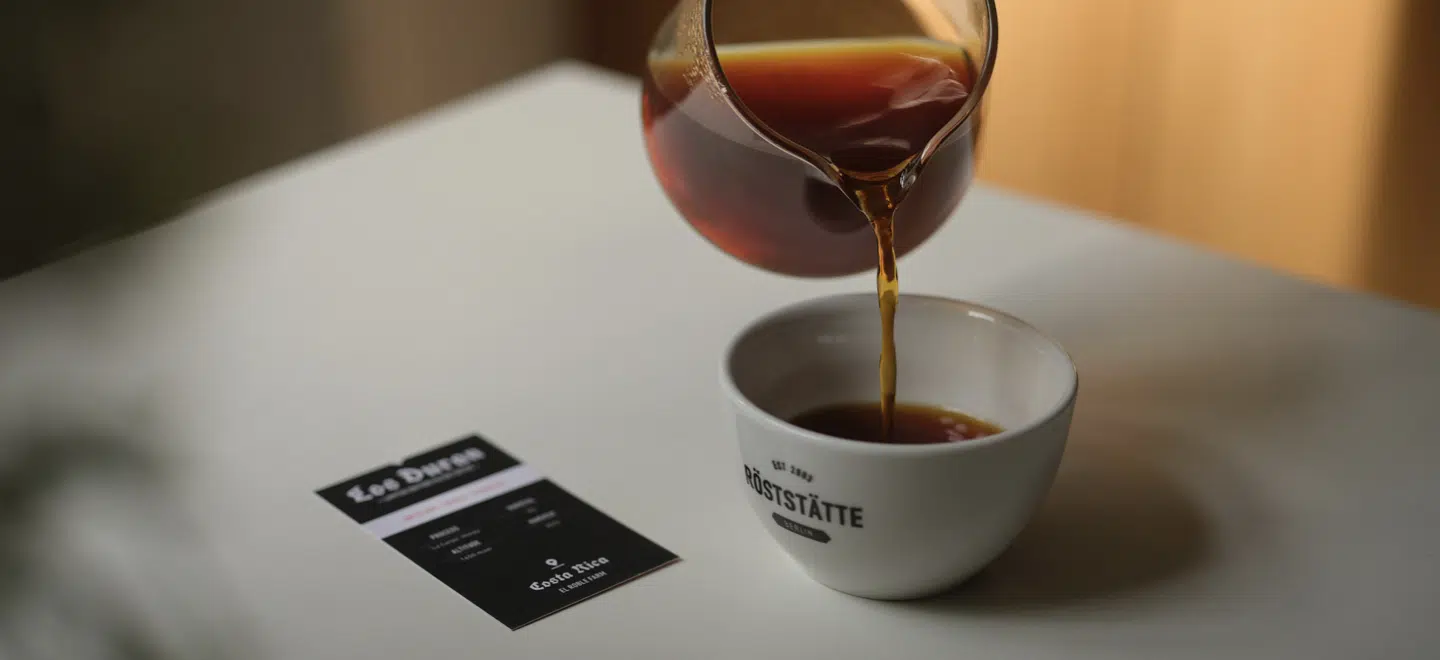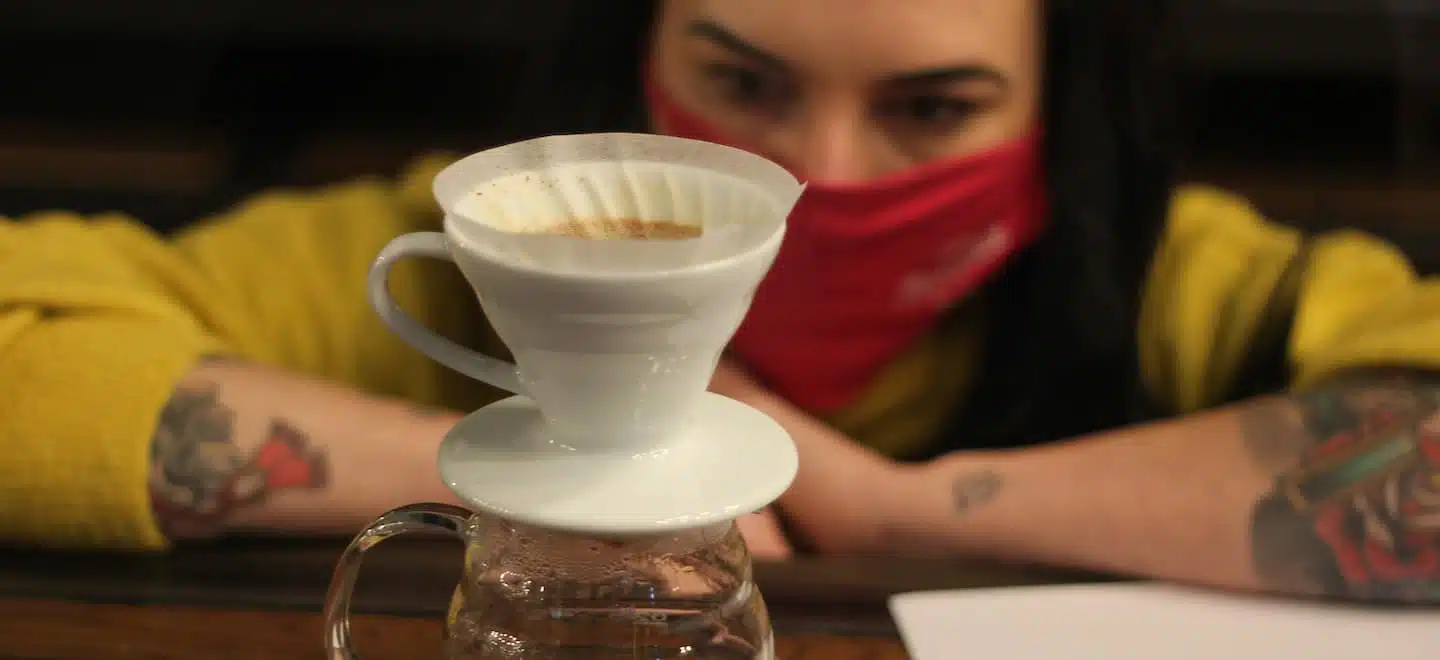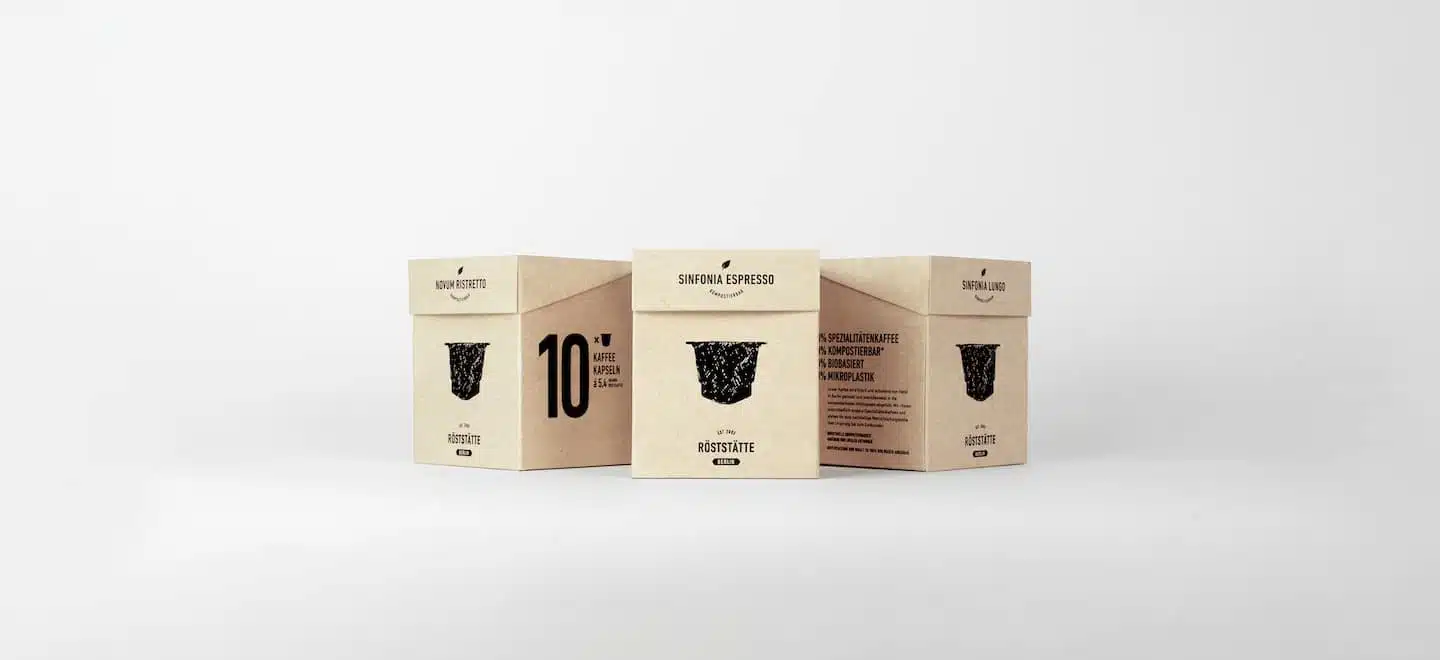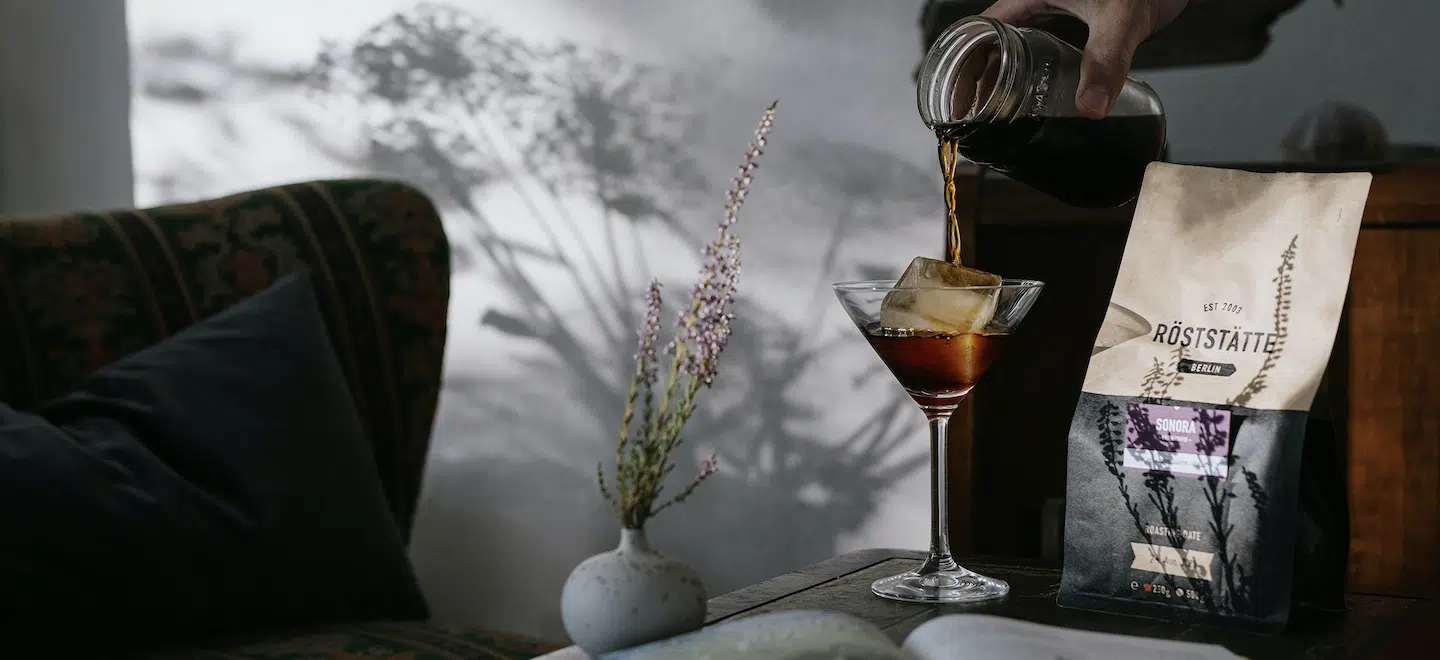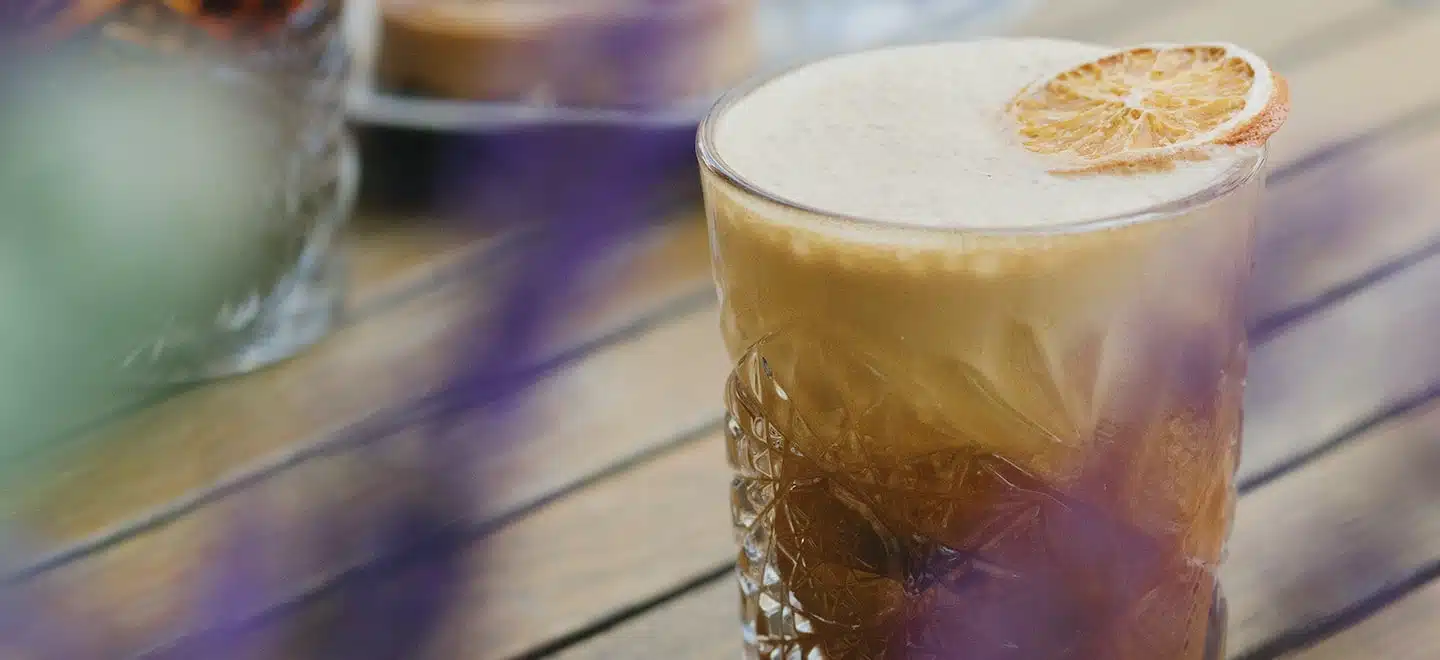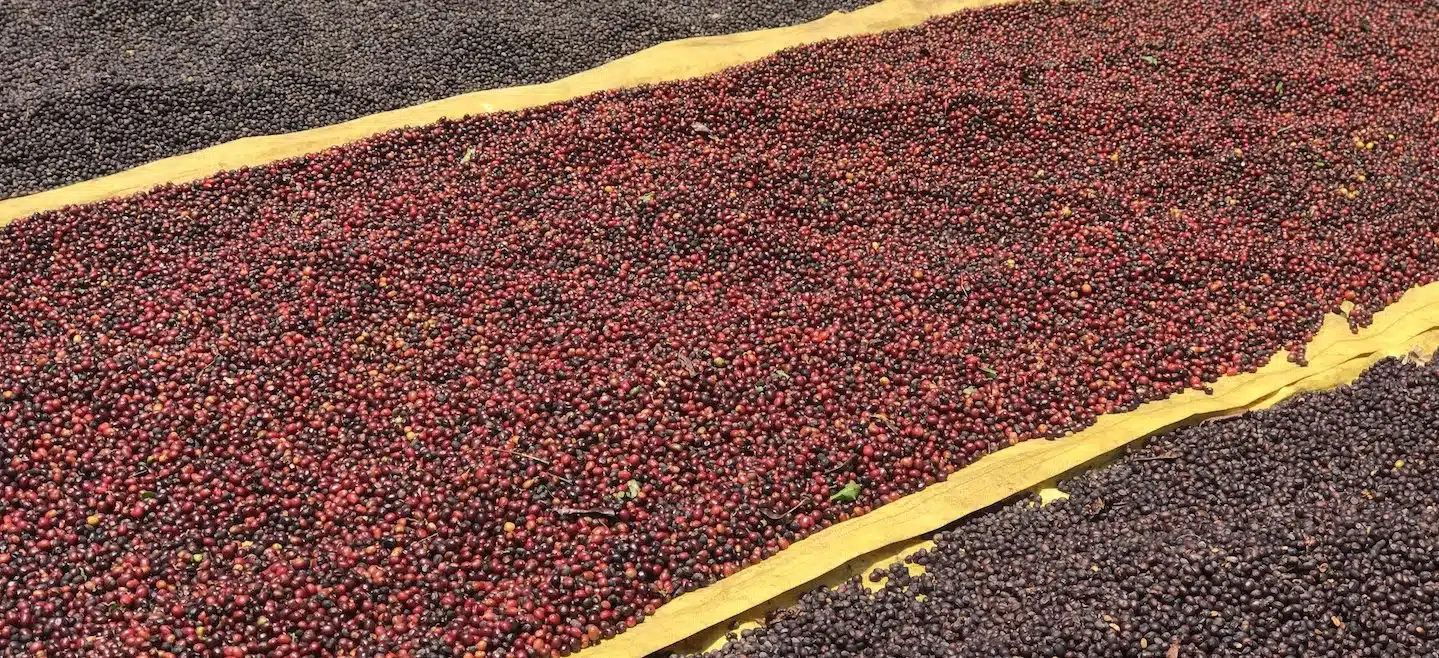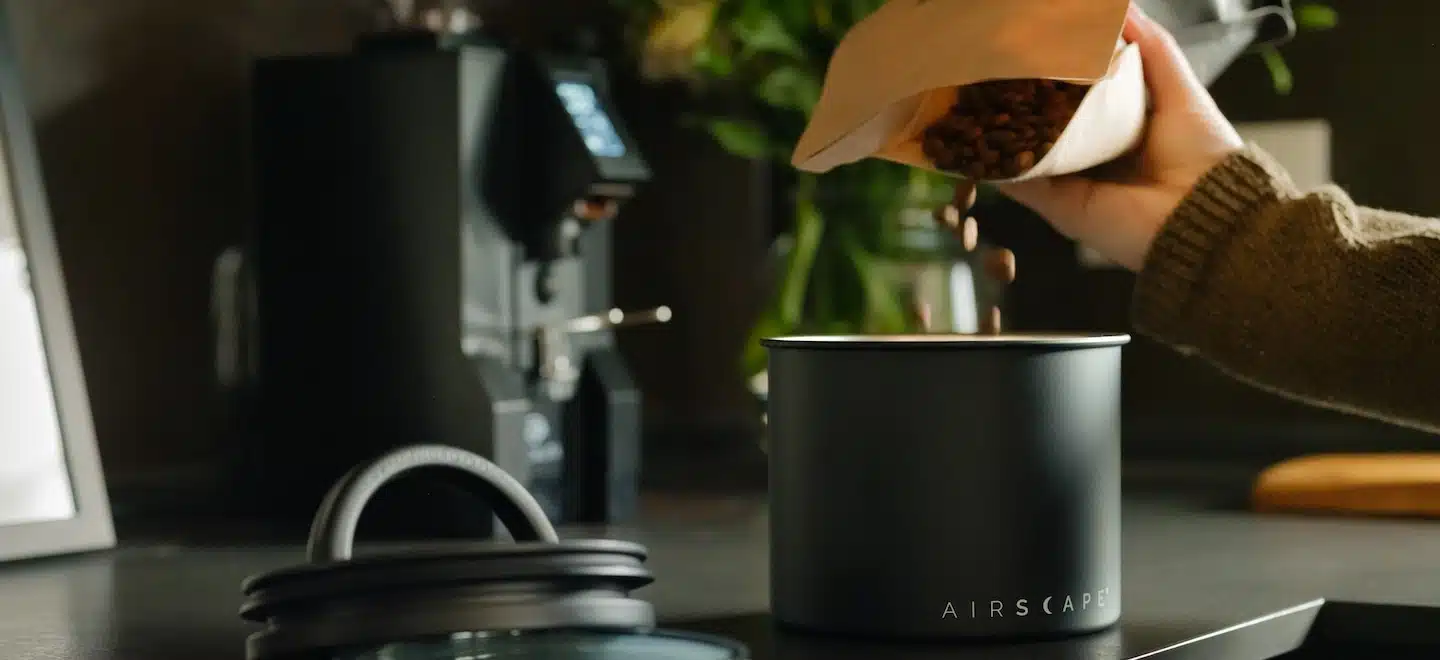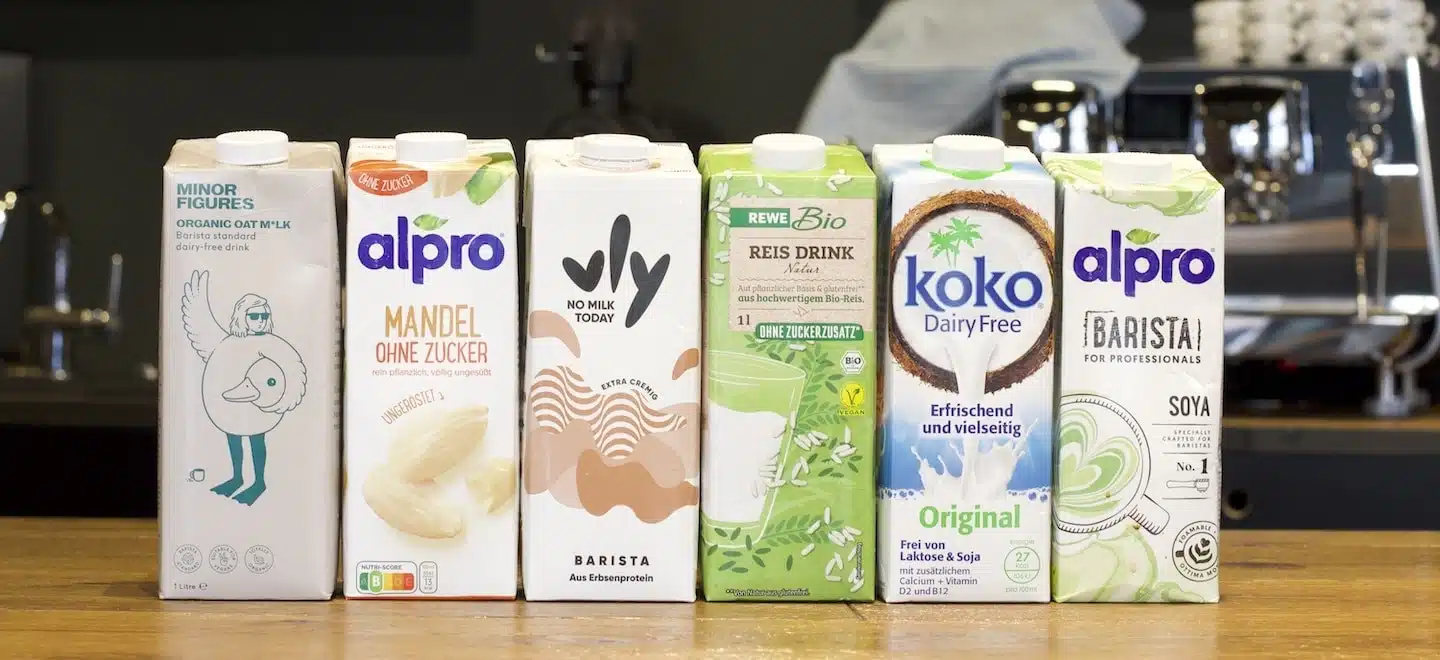10 tips to set the grind size for your coffee correctly
Freshly ground coffee simply tastes best. However, if it suddenly tastes too sour, too bitter, too strong or even too watery, this could be due to an incorrect grind setting. We explain how to find the right grind for your coffee maker, from portafilter to French press.
As fine as desert sand, as medium-grained as table salt or as coarse as sea salt - the grind determines the flavour of your coffee. Unfortunately, it happens time and again that the flavour of a wonderful coffee is ruined by the wrong grind. Basically, brewing coffee is like cooking. A certain recipe is required. In addition to the quantity of coffee and water, this also includes the grind, which has a decisive influence on the extraction time. This refers to the time it takes for the water to dissolve the desired ingredients from the coffee. From fine (espresso) to medium (hand filter) to coarse (French press) and countless intermediate stages, there are different degrees of grind – depending on the preparation method.
How to find the perfect grind for your favorite coffee is a complex and broad field. In this article, we want to provide a basic insight for home users. How do I achieve the perfect extraction for my espresso or filter coffee? How do I grind my coffee for V60 and Aeropress? What can I do if my coffee tastes too watery or too bitter? We explain this in this overview.
What happens during grinding?
During the grinding process, the surface of the coffee bean is enlarged for contact with water and the cell structure in the beans is broken up. This releases the numerous flavouring substances and dissolves them in contact with water. Nerd fact: Ground coffee loses 60 per cent of its flavour after just 15 minutes, so it tastes best if you grind the coffee beans as fresh as possible. Find out how to keep your coffee beans fresh for a long time
here.
Tip 1: Understand coffee extraction – and discover the sweet spot
Extraction refers to the time it takes for the water to dissolve the desired ingredients from the coffee. A maximum of 30 per cent can be extracted from each coffee bean. The so-called
Golden Cup Standard of the Speciality Coffee Association, i.e. the recommended extraction, is 18 to 22 per cent.
This standard is based on American studies from the 1960s. Interestingly, the studies have been repeated over the decades and have led to similar results. The result: most coffee drinkers prefer a coffee that has been brewed with an extraction level of 18-22 per cent and a total dissolved solids (TDS) content of 1.15-1.45. This is the so-called sweet spot.
Mit einem sogenannten Refraktometer kannst du den Extraktionsgrad bestimmten, also messen, wieviel Kaffee in der Flüssigkeit ist. Damit kannst du herausfinden, ob dein Kaffee über- oder unterextrahiert ist. Diese Geräte sind allerdings teuer und zeitaufwendig. Als leidenschaftlicher Home-Barista solltest du dich auf deinen Gaumen verlassen.
Tip 2: Avoid under-extraction (tastes sour)
If the coffee passes through too quickly, it is probably ground too coarsely. In this case, the coffee is under-extracted (i.e. less than 18 per cent of the desired ingredients have been extracted), which means that the water has too little contact with the coffee and cannot absorb enough flavour. This happens, for example, if the coffee is ground too coarsely. As a result, the espresso tastes too watery and often sour; it lacks body.
"An over-extraction tastes bitter, whereas an under-extraction tastes sour."
Valeria Kutuzova, Head Barista Röststätte
Tip 3: Avoid over-extraction (tastes bitter)
If the coffee is extracted for too long, it tastes too strong and bitter. In technical jargon, this is called over-extraction (i.e. more than 22 per cent of the desired ingredients are removed). This happens, for example, if the coffee is ground too finely, which results in the coffee having too long a contact time with water. A tell-tale sign of over-extraction is a dry mouthfeel.
Tip 4: The right grind for your espresso
By adjusting the grind, you can improve the flavour of your coffee, ensure repeatability, experiment with recipes and much more. The grind is decisive for the flavour and quality of your espresso – regardless of whether you use a portafilter machine, fully automatic machine or espresso maker.
The basic rule is: if the grind is too coarse, the espresso can quickly become watery and develop a sour flavour (short extraction time). If it is ground too finely, the espresso tends to have a strong, bitter, perhaps even metallic flavour (long extraction time).
Portafilter machine
We recommend a fine grind for the portafilter machine. The extraction time (throughput time) in the portafilter machine should be between 25 and 31 seconds – this is how you reach the sweet spot of your favourite espresso. If the coffee runs through faster, it is probably ground too coarsely. In this case, the coffee is under-extracted. If your coffee is ground too finely, it may be over-extracted.
Fully automatic machine
The degree of grinding, which can be adjusted with a controller on most fully automatic machines, is decisive for the flavour and quality of your coffee. Every machine works slightly differently. We also recommend a fine grind for fully automatic machines. However, we do not recommend setting the finest or coarsest grind – but rather something in between with a tendency towards fine. If the coffee tastes too bitter or too strong, it is best to set it a little coarser. If, on the other hand, the coffee lacks body or tastes too acidic and watery, you should set the grind to a finer setting.
Tip 5: The right grind for your filter coffee
The right grind for your filter coffee varies depending on the coffee maker. From French press (coarse) to V60/hand filter, filter coffee machine and Chemex (medium-coarse) to Aeropress (medium-coarse).
V60 hand filter and Chemex
We recommend a medium to coarse grind for the V60 hand filter and for the Chemex, which depends entirely on the bean - just like the temperature for your brewing recipe. Washed coffees need a little more temperature, naturals a little less. Basically, unlike the Chemex, the V60 uses thinner filter paper, which allows more flavour to be extracted and the coffee taste is very clean and varied. However, the thinner filter paper also leads to a faster brewing time, which is why the grind should be a little finer than with the Chemex.
We recommend the following basic brewing recipe:
- 20 grams of coffee beans
- Grind: Medium-coarse (slightly finer for the V60 than for the Chemex)
- 300 ml water
- 92 degrees temperature
- Extraction time 3-4 minutes
French Press
We recommend a relatively coarse grind for the French press. The reason: the contact time of the water with the coffee is longer with the French press - and we want to avoid over-extraction. It is important that the coffee is not ground too finely, otherwise the flavour can become too bitter and some French press pots cannot filter particles that are too fine. It is important to invest in a good coffee grinder that produces an even grind without fines (particles that are too fine) and boulders (particles that are too coarse).
We recommend the following as a basic brewing recipe:
- 30 grams of ground coffee beans
- Grind: Medium-coarse
- 500 ml filtered water
- 94 degrees temperature
- Extraction time 3-4 minutes
Aeropress
You can experiment with the Aeropress and really try out lots of things. Another fact for coffee nerds: you can grind very finely (fast extraction), but also very coarsely (with infusion, i.e. you let it extract for four minutes and then press), or bypass (a little bit of water and a lot of coffee, brew ratio 1:4). This allows you to vary the flavour of your coffee.
As a basic brewing recipe we recommend:
- 14.5 grams of ground coffee
- Grind: medium
- 220 ml filtered water
- 92 degrees temperature
- Extraction time: 1:30 minutes
Filter coffee machine
The right grind for your filter coffee machine is medium to coarse - depending on the coffee, origin, fermentation and flavour profile you want to emphasise.
We recommend the following as a basic brewing recipe:
- 60 grams of ground coffee
- Grind: medium/coarse
- 1 litre of filtered water
- 96 degrees temperature
- Extraction time 4-5 minutes
Tip 6: Avoid fines and boulders
The key to a good brewing result is an even grind. If your ground coffee contains a mixture of larger and smaller particles (boulders or fines), these will be extracted at different rates. As a rule, the larger particles will under-extract, while the smaller ones will over-extract. This can lead to unpredictable extraction rates, messing up the flavour of your coffee and preventing you from successfully re-brewing a recipe.
To solve this problem, most coffee lovers opt for high-quality grinders – but even the most expensive of them can exhibit some degree of grinding inconsistency. The beans tend to break up instead of breaking cleanly. This almost always results in a certain amount of fines and boulders. The solution? Try different grinders before you buy them.
Tip 7: Find the right coffee grinder
There are coffee grinders with a conical grinder (conical grinders), with a disc grinder (flat burr grinders) and so-called blade grinders. Blade grinders are more like blenders, they grind the coffee and produce a very inconsistent particle size. We do not recommend cheap blade grinders, which only scramble the coffee, for either espresso or filter coffee. For espresso in particular, we definitely need a very fine and uniform particle size.
For your espresso, we recommend an automatic grinder with a stainless steel disc or cone grinder. Stainless steel is becoming increasingly popular among coffee fans. In the area of electric coffee grinders for home users, we recommend, for example, our
ECM Manuale 54 or the
ECM S-Automatik 64 und
ECM S-Manuale 64 in the higher price range. The Atom Prima is our current superhero among coffee grinders for home users.
For your filter coffee - whether pour-over or French press - a precise hand grinder with a ceramic or stainless steel grinder is often suitable. We currently stock grinders from Kinu in our shop, we recommend for example
die Kinu M47 Simplicity as one of the best grinders on the market. You can find out more about coffee grinders in our
Guide for Home-Barista.
Tipp 8: Experiment
Basically, there is no fixed standard between the manufacturers of coffee grinders. Each grinder must therefore be set separately. A "4" on a coffee grinder does not mean that the same grind will be achieved with another grinder. We recommend: If you experiment with your new grinder a little every day, you should soon be able to achieve the ideal result in your cup. Very important: Make notes of your brewing recipe with brew ratio (ratio of coffee and water) and grind size every day. This is the only way to optimise your results in the cup.
Tip 9: Every coffee has its own recipe
Whether it's our popular Espresso Blend Sinfonia, the Santiago filter coffee or our new seasonals. Whether washed, natural, honey processed, carbonic maceration, Brazil or Ethiopian – every coffee has its own recipe.
How is this recipe created? Firstly, personal preferences always determine the ideal coffee recipe. Depending on the origin, variety, processing method, roasting profile and more, you may want to emphasise different characteristics, for example the fruity aromas in our filter coffees from Africa, or the chocolaty aroma of our Signature Blend Sinfonia in your espresso.
You can find the right recipe - carefully created for you by our Head Baristas - on the product page of the respective coffee. You can also simply scan the QR code on your coffee card from the packaging to go directly to the recipe. On our blog you will also find
basic Brew Guides for all preparers,
French Press,
Aeropress,
V60,
Espresso,
Filter Coffee – also suitable as a basis for experiments (advanced).
"Mistakes in home brewing can happen and are human, especially in the first few weeks as a home barista after purchasing a new espresso or filter coffee setup."
Valeria Kutuzova, Head Barista
Tip 10: Find errors and optimize the brewing recipe
If your filter coffee or espresso now tastes too acidic, too bitter or too watery, you can do the following:
- Adjust the brewing temperature
- Adjust the grind
- Adjust recipe, brew ratio
- Clean & descale the espresso machine
- Avoid roasts that are too dark and robusta beans
- Invest in a good coffee grinder
written by
Christopher Braemer
Christopher ist gelernter Journalist und arbeitet im Marketing von Röststätte Berlin. Am Herzen liegen ihm der Röststätte-Newsletter und der Contentbereich. Für den Blog schreibt er über Kaffee aus aller Welt, aber auch über Wirtschaft, Politik oder Nachhaltigkeit. Falls ihr Fragen oder Anregungen habt, schreibt ihm gern eine Nachricht.
Fotos: Röststätte, Laura Droße
website
